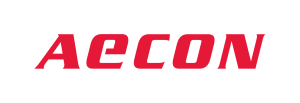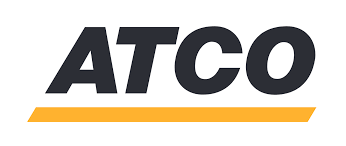Aecon Utilities Training & OQ
Course categories
Skip available courses
Available courses
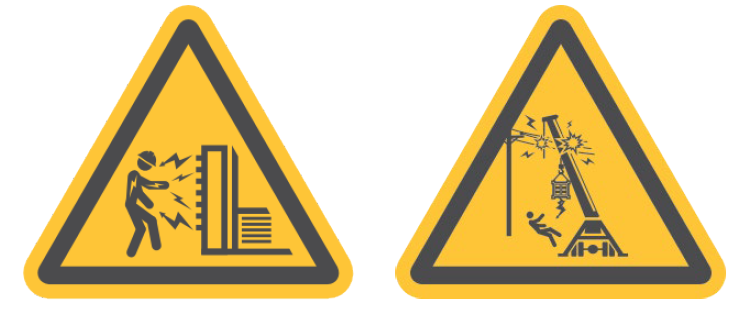
This standard operating procedure (SOP) applies to Aecon Group Inc. (AGI), its operating Sectors, subsidiaries, and sponsored joint ventures (collectively “Aecon”) and is to be used on all applicable joint venture (JV) projects and by special purpose companies governed by the Aecon Environmental, Health and Safety Management System (EHSMS). It is acknowledged that some projects and joint ventures may have EHS management systems specific to their work scopes and requirements. Accordingly, in these specific cases, the Aecon EHS Management System may be replaced by a project specific EHSMS, subject to Aecon approval.


Aecon Utilities Training & Innovation Centre is offering a Personal Protective Equipment (PPE) training module. Upon completion of the course, participants will be able to:

The Indigenous Awareness module will provide you a greater understanding of the significance of the Indigenous peoples contributions to Canada. You will gain the critical knowledge required to better equip yourselves to foster successful and mutually beneficial engagement with indigenous communities.
This work instruction aims to protect Aecon personnel and external workers from potential injury or illness from working alone.

Fundamentals of Hazard Assessment and Risk Control
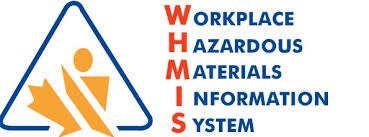
PLEASE BE AWARE - THIS COURSE WILL NOT RECORD A GRADE OR PROVIDE A CERTIFICATE IF ATTEMPTED ON A MOBILE DEVICE
You must complete this course on a computer
WHMIS was designed to ensure the safety of employers and employees while at the workplace. In particular, the system was designed to keep workers and employers informed of the dangers and hazards associated with the chemicals and substances that they may come into contact with while on the job.

Fundamentals of Ground Disturbance
Aecon Utilities Training & Innovation Centre is offering a Fundamentals of Ground Disturbance training module. The course has been designed to meet the industry standard for Level 1 (worker) and Level 2 (supervisor).
Upon completion of the course, participants will be able to:
- Summarize Legislation and Excavation Competencies;
- Describe Roles & Responsibilities;
- List the procedures for disturbing ground safely;
- Identify soil types, and corresponding sloping / trench protection devices;
- Summarize the properties of excavations and trenches;
- Evaluate ground disturbance hazards and identify applicable controls.
- Explain Hand Exposure & Backfilling practices;
- Describe general requirements for locates and marking of underground utilities;
- Discuss other cave-in prevention methods including material, spoil and equipment placement;
- Summarize basic Emergency Response Procedures;

Upon completion of the course, participants will be able to:
- Explain line of fire hazards
- Identify blind spots on different types of heavy equipment
- Summarize operator and ground worker responsibilities
- Demonstrate hand signals
- Demonstrate knowledge of “Where Do I Stand” responsibilities
- Identify critical hazards when operating equipment near energized conductors
- Discuss Limits of Approach to overhead hydro wires
- Explain step & touch potential and the procedure to follow in the event of an electrical cable strike


Fundamentals of Fire Safety

CVOR & Cargo Securement
Aecon Utilities Training & Innovation Centre offers a CVOR Training Program to ensure our drivers know and comply with all of the requirements. Upon completion of the course, participants will be able to:
- Summarize the licensing requirements to operate different types of vehicles
- Explain the purpose and requirements of CVOR Legislation
- Describe the process to complete a Schedule 1 Pre-Trip Inspection
- Identify which Record Keeping Documents must be completed and when to use them
- Accurately complete a Pre-Trip Inspection, Record Duty Status and Log Book
- Identify the critical requirements of cargo securement

Aecon Utilities Training & Innovation Centre is offering a Skidding and Cribbing or Pipe training module. Upon completion of the course, participants will be able to:
- Describe inspection criteria for skids and pipe cones
- Identify which types of pipe support may be used for different applications and pipe sizes
- Evaluate and assess ground conditions
- Demonstrate safe skid handling practices including use of a skid hook
- Explain padding and protection requirements for skidding coated pipe
- Demonstrate dismantling practices, and proper storage and transportation methods

Safe Driving
Upon successful completion of this course, participants will be able to:
- Summarize the definition of “Defensive Driving”
- Recall the responsibilities of operators of Aecon vehicles.
- Discuss the direct and underlying causes of collisions
- Explain how driving while distracted increases chances of a collision.
- Demonstrate knowledge of general Safe Driving Practices
- Describe the relationship between speed and stopping distances
- Explain how to apply defensive driving techniques on the road.
Accessibility for Ontarians with Disabilities Act (AODA) Training
The Accessibility for Ontarians with Disabilities Act (AODA) was enacted to expand the government’s mission to offer full accessibility to all disabled Ontarians by 2025.
This program will cover basic information about AODA, comprehensive details about its standards, and the benefits they offer Ontarians.
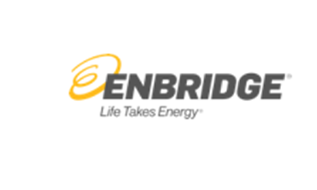
|
The Enbridge LSR’s focus on key actions, what we can do to ensure our own team commits to these actions and/or how can we help the teams we support to do the same. |
Hazardous Energy Control - Enbridge
Upon completion of the course, participants will be able to:
- Explain the purpose and objectives of a lock out / tag out system
- Define roles and responsibilities of applicable workplace parties
- List and describe the different states of energy
- Summarize the different control methods
- Identify and describe the procedures to implement the different types of “Lock Out” equipment
- Describe the procedure for removing an abandoned or delinquent lock
Aecon Utilities Training & Innovation Centre is offering the Enbridge GDS Pipe Excavation training module. Upon completion of the course, participants will understand:
- Pre-Excavation
- Positive Identification
- Hand Expose Zone
- Emergency
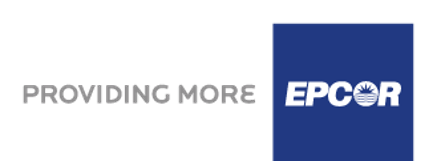
This training reviews Epcor's Life Saving Rules
- Ground Disturbances
- Limits of Approach
- Confined Spaces
- Lifting
- Working at Heights
- Alcohol & Drugs
- Hazardous Energy

Epcor LSR
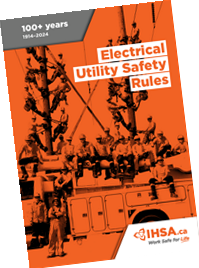
Review of the updates and key rules in the 2024 EUSR Rulebook
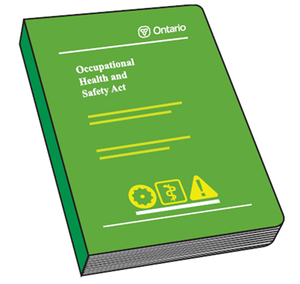
Regulation 22/04 Review

Assessment Description
This competency assessment evaluates the candidate's knowledge and capability in pipeline location operations. The assessment verifies proficiency in electronic locating equipment operation, understanding of electromagnetic principles, and ability to identify and respond to interference issues. Candidates must demonstrate comprehensive knowledge of map interpretation, field verification techniques, and abnormal operating condition recognition. Both theoretical knowledge and practical skills are assessed to verify competency in this critical pipeline safety task.
Learning Objectives
Upon successful completion of this assessment, participants will demonstrate ability to:
- Demonstrate proper use of pipe locating equipment
- Accurately locate and mark underground pipelines
- Interpret pipeline maps and alignment sheets
- Recognize and respond to Abnormal Operating Conditions (AOCs)
- Follow required safety procedures during locating activities
- Document pipeline location findings according to standards

Assessment Description
This assessment verifies competency in pipeline excavation operations and safety procedures. Candidates are evaluated on their knowledge of equipment selection, soil classification, excavation planning, and protection systems. The assessment includes verification of understanding in site preparation, underground utility identification, and exposed pipeline protection protocols. Theoretical and practical competency in emergency response procedures and documentation requirements must be demonstrated.
Learning Objectives
Upon successful completion of this assessment, participants will demonstrate ability to:
- Implement proper excavation techniques for pipeline exposure
- Apply safety procedures specific to pipeline excavation
- Utilize appropriate excavation equipment and tools
- Identify potential hazards during excavation
- Protect exposed pipeline segments
- Follow proper documentation procedures

Assessment Description
This technical assessment verifies competency in thermite welding (Cadweld) procedures for pipeline applications. Candidates must demonstrate knowledge of material selection, surface preparation, and proper connection techniques. The assessment evaluates understanding of environmental considerations, quality control measures, and safety requirements specific to thermite welding operations. Both theoretical knowledge and practical skills are verified.
Learning Objectives
Upon successful completion of this assessment, participants will demonstrate ability to:
- Perform proper Cadweld connection procedures
- Select appropriate materials and equipment
- Implement required safety measures
- Assess environmental conditions affecting the process
- Verify connection quality
- Complete required documentation

Assessment Description
This competency verification focuses on pipeline coating application procedures and quality control measures. Candidates are assessed on their knowledge of surface preparation techniques, coating material selection, and application methods. The evaluation includes verification of understanding in environmental controls, coating inspection procedures, and documentation requirements. Both theoretical and practical competency must be demonstrated.
Learning Objectives
Upon successful completion of this assessment, participants will demonstrate ability to:
- Prepare pipe surfaces for coating application
- Select and apply appropriate coating materials
- Verify coating integrity
- Implement environmental controls during application
- Perform quality control checks
- Document coating applications properly

Assessment Description
This technical assessment evaluates competency in pipeline activation and deactivation procedures. Candidates must demonstrate knowledge of system preparation, pressure monitoring, purging procedures, and emergency response protocols. The assessment verifies understanding of proper sequencing, stakeholder coordination, and documentation requirements. Emphasis is placed on verifying knowledge of safety measures and system integrity procedures.
Learning Objectives
Upon successful completion of this assessment, participants will demonstrate ability to:
- Execute proper pipeline activation procedures
- Perform safe deactivation sequences
- Monitor system parameters during transitions
- Implement emergency procedures when required
- Coordinate with relevant stakeholders
- Complete required documentation

Assessment Description
This assessment verifies competency in pipeline isolation procedures and safety requirements. Candidates are evaluated on their knowledge of isolation method selection, verification procedures, and system monitoring requirements. The assessment includes verification of understanding in valve operations, blinding procedures, and lock-out/tag-out requirements. Both theoretical knowledge and practical skills must be demonstrated.
Learning Objectives
Upon successful completion of this assessment, participants will demonstrate ability to:
- Implement proper isolation procedures
- Verify isolation effectiveness
- Maintain safe working conditions
- Monitor system parameters during isolation
- Respond to potential emergency situations
- Document isolation procedures accurately

Assessment Description
This competency evaluation focuses on pipeline cleaning and testing procedures for pipes 1 1/4" and larger. Candidates must demonstrate knowledge of cleaning method selection, test medium requirements, and pressure testing procedures. The assessment verifies understanding of equipment operation, parameter monitoring, and quality control measures. Thorough knowledge of safety procedures and documentation requirements must be demonstrated.
Learning Objectives
Upon successful completion of this assessment, participants will demonstrate ability to:
- Execute proper cleaning procedures
- Perform pressure testing operations
- Monitor test parameters
- Identify and respond to testing anomalies
- Maintain testing equipment
- Complete required test documentation

Assessment Description
This technical assessment verifies competency in testing procedures for small diameter pipelines. Candidates are evaluated on their knowledge of test method selection, equipment setup, and pressure testing requirements. The assessment includes verification of understanding in test medium handling, parameter monitoring, and result documentation. Both theoretical and practical competency must be demonstrated.
Learning Objectives
Upon successful completion of this assessment, participants will demonstrate ability to:
- Execute proper testing procedures for small diameter pipes
- Perform pressure testing safely
- Monitor and record test parameters
- Identify and address testing issues
- Maintain testing equipment
- Document test results accurately

Assessment Description
This technical assessment verifies competency in Mueller drilling machine operations and procedures. Candidates must demonstrate knowledge of D4, D5, and DH5 drilling machine setup, operation, and maintenance requirements. The assessment evaluates understanding of pressure control equipment, drilling procedures, and coupon retention methods. Candidates are assessed on their ability to verify proper machine assembly, pressure testing of equipment, and safe drilling operations. Special emphasis is placed on verifying knowledge of safety protocols, pressure monitoring, and emergency response procedures during live gas conditions.
Learning Objectives
Upon successful completion of this assessment, participants will demonstrate ability to:
- Select and inspect appropriate Mueller drilling equipment and components
- Execute proper machine setup and pressure testing procedures
- Perform drilling operations according to manufacturer specifications
- Monitor system pressures and drilling progress
- Implement safety procedures during live gas operations
- Complete required documentation and maintain drilling records

Assessment Description
This technical assessment verifies competency in plastic pipe squeeze-off procedures and emergency response capabilities. Candidates must demonstrate knowledge of proper squeeze-off tool selection, placement location determination, and execution of squeeze-off procedures. The assessment evaluates understanding of pipe stress limitations, re-rounding procedures, and monitoring requirements. Special emphasis is placed on verifying knowledge of safety protocols and damage prevention during squeeze-off operations.
Learning Objectives
Upon successful completion of this assessment, participants will demonstrate ability to:
- Select appropriate squeeze-off tools and equipment
- Determine proper squeeze-off locations and procedures
- Execute squeeze-off operations safely
- Monitor pipe condition during squeeze-off
- Perform proper re-rounding procedures
- Document squeeze-off operations according to standards

Assessment Description
This competency verification evaluates knowledge of pipeline installation procedures and quality control requirements. Candidates must demonstrate understanding of proper handling techniques, alignment procedures, and installation method selection. The assessment verifies knowledge of trench preparation, pipe placement, and joint completion requirements. Both theoretical and practical competency in safety protocols and quality control must be demonstrated.
Learning Objectives
Upon successful completion of this assessment, participants will demonstrate ability to:
- Execute proper pipe installation procedures
- Implement appropriate handling techniques
- Perform alignment and positioning operations
- Verify installation quality
- Maintain installation safety requirements
- Complete required documentation

Assessment Description
This technical assessment verifies competency in Trenchless drilling operations for pipeline installation. Candidates must demonstrate knowledge of site assessment, equipment operation, and drilling plan development. The assessment evaluates understanding of drilling techniques, parameter monitoring, and obstacle avoidance procedures. Thorough knowledge of safety protocols, equipment maintenance, and documentation requirements must be verified.
Learning Objectives
Upon successful completion of this assessment, participants will demonstrate ability to:
- Plan boring and directional drilling operations
- Operate drilling equipment safely
- Monitor drilling parameters
- Respond to drilling complications
- Maintain equipment properly
- Document drilling operations accurately

Assessment Description
This technical assessment verifies competency in flange assembly and torquing procedures. Candidates must demonstrate knowledge of bolt/stud selection, flange preparation, and proper torquing sequences. The assessment evaluates understanding of gasket installation, torque requirements, and leak prevention measures. Candidates are assessed on their ability to verify proper flange alignment and maintain documentation of torque values. Both theoretical knowledge and practical skills in flange assembly safety protocols must be demonstrated.
Learning Objectives
Upon successful completion of this assessment, participants will demonstrate ability to:
- Select and inspect appropriate bolting materials and equipment
- Implement proper flange preparation procedures
- Apply correct bolt torquing sequences and values
- Verify flange alignment and assembly quality
- Execute safety procedures during flange assembly
- Document torque values and assembly procedures accurately

Assessment Description
This competency verification focuses on polyethylene pipeline abandonment procedures and safety requirements. Candidates are evaluated on their knowledge of isolation methods, purging procedures, and regulatory requirements for pipeline abandonment. The assessment verifies understanding of environmental considerations, proper documentation, and permanent abandonment techniques. Thorough knowledge of safety protocols and verification procedures must be demonstrated.
Learning Objectives
Upon successful completion of this assessment, participants will demonstrate ability to:
- Execute proper pipeline abandonment procedures
- Perform isolation and purging operations safely
- Implement environmental protection measures
- Verify complete pipeline evacuation
- Apply proper capping and sealing methods
- Complete required abandonment documentation

Course Overview: This comprehensive assessment evaluates operators' knowledge and decision-making capabilities in hydrovac operations, with a focus on safety protocols, equipment operation, and emergency response. The course consists of two main components: a 20-question written examination and an Abnormal Operating Conditions (AOC) scenario assessment.
Learning Objectives: Upon completion, operators will demonstrate competency in:
- Safe operation of hydrovac equipment
- Emergency response procedures
- Understanding of pressure and vacuum systems
- Utility protection and ground disturbance protocols
- Winter operations and cold weather procedures
- Equipment inspection and maintenance requirements
